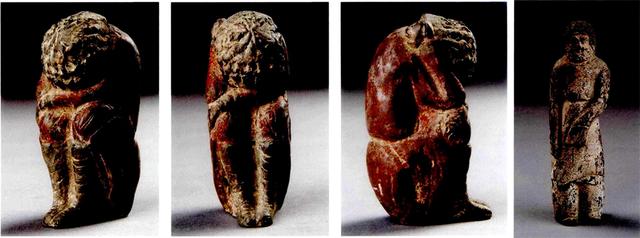原文标题:
Brands and marketing
This leader is amazing!! #ad
Social influencers are becoming a serious business
Read this leader!!#ad
[Paragraph 1]
IT IS A sure sign that a hot trend has reached the mainstream when the tax authorities catch up. This week China promised a tax-evasion crackdown on social-media influencers, who are paid by brands to promote products online to armies of followers. One of the big stars, Viya, a 30-something fashionista known as the live-streaming queen, has already been fined $210m for not declaring her income. The size of that levy shows the sheer scale of the industry, which accounts for 12% of online sales in China. Outside China, influencers are also likely to have an enduring role in e-commerce. For all firms with brands—and together those brands are worth over $7trn—it is time to realise that influencing is more than just a hobby.

[Paragraph 2]
The use of personal endorsements used to be about harnessing existing celebrity power. Elizabeth Taylor touted Colgate-Palmolive’s shampoo in the 1950s, and Michael Jordan’s deal in 1984 with Nike revolutionised both basketball and branding. Influencers turn the logic on its head: selling things helps make them more famous. Through curated feeds of clipped videos and filtered photos they offer recommendations to consumers, mingled with glimpses into their daily lives that give their artifice an aura of authenticity. Sometimes they disclose how they are paid. Often they do not.
[Paragraph 3]
Initially dismissed as credulous Gen-Z folk who had mistaken posting selfies for having a job, these entrepreneurs have become a big business, boosted further by the e-commerce surge from the pandemic. Total spending on influencers by brands could reach $16bn this year. Whereas the number of wannabe influencers outside China is in the millions, an elite of under 100,000 of them who have over 1m followers each get the bulk of revenues and the front seats at fashion shows.
[Paragraph 4]
Their staying power suggests that they add value in several ways. They can save money: Elon Musk is an honorary influencer whose raucous online presence lets Tesla do without any conventional advertising (General Motors blew $3.3bn on it in 2021). Influencers’ networks reach new audiences, particularly younger shoppers. Global brands can localise their appeal by cutting deals with them. In China local shopping festivals and style sensibilities matter, so transplanting marketing campaigns from the West does not work. And influencers are technologically proficient in a way that old-style brand ambassadors never were. They are quick to adapt to newer platforms like TikTok and to the ever-changing algorithms of older ones like Instagram.
[Paragraph 5]
Yet one-third of brands do not use influencers. They worry about tarnishing their reputation. Having a swarm of freelance advocates is riskier than the command-and-control campaigns of the “Mad Men” era. And the industry is a Wild West, awash with fraud and manipulation.
[Paragraph 6]
Despite this, ignoring influencers is a mistake. Their share of digital advertising budgets is still low at perhaps 3%, but it is rising fast. The boundary between entertainment and e-commerce is blurring. And the most popular marketing strategy of the 2010s—ads targeted through Google and Facebook—is under threat as new privacy standards, including on Apple’s iPhone, make it harder to spy on potential customers.
[Paragraph 7]
To get the most out of influencers, brands should set a clear strategy. They should expect more regulation on consumer protection: China’s crackdown may also include limits on spending and content rules. The guiding principle should be to use only influencers who disclose to their audiences that their posts are paid. As the Wild West phase ends, brands should also embrace new analytical tools that help them gauge the performance of influencers, sorting the con-artists from the stars. It used to be said that only half of all advertising spending worked, but it was impossible to know which half. Now brands can control only half of what influencers say, but they may be able to calculate 100% of the value they add.
(恭喜读完,本篇英语词汇量716左右)
原文出自:2022年4月2日《The Economist》Leaders版块。
精读笔记来源于:自由英语之路本文翻译整理:Fei Min本文编辑校对: Irene仅供个人英语学习交流使用。
【补充资料】
Z世代(Gen-Z folk )是一个网络流行语,也指新时代人群。新的“Z世代”是指1995—2009年间出生的一代人,他们一出生就与网络信息时代无缝对接,受数字信息技术、即时通信设备、智能手机产品等影响比较大,所以又被称为“网生代”“互联网世代”“二次元世代”“数媒土著”等。
该词语的称谓最早可以追溯到发表于1999年第5期《中国青年研究》上的一篇短文—《最新人群—“Z世代”的生存状态》,文中提及将1980—1984年出生的一批青年人命名为“Z世代”(即最早的一批80后青年)。
Z世代和千禧一代的区别:千禧一代指生于1982年到2000年的人,见证了互联网快速发展的群体,而Z世代是指20世纪90年代中叶至2010年前出生的人,传说中的95后 ,与千禧一代相比,Z世代也被称为互联网世代。也可以说,千禧一代是擅长使用网络,Z世代却是习惯使用网络,区别就是一个是后天培养,另一个是先天养成。
《广告狂人》(Mad Men)是一部美国年代剧,于美国时间2007年7月19日起在AMC频道首播。全剧共7季92集,已于2015完结。故事背景设定在上世纪六十年代的纽约麦迪逊大街上的一家广告公司里,以一群广告人的事业、生活为中心,展他们追寻“美国梦”过程中的种种遭遇,折射出二战以后美国在60年代(准确来说是50代末—70年代初)社会、经济、政治的一系列剧烈变革。
狂野西部(Wild West)的时间点设定为公元1850年,此时正值美国西部地区的淘金热的黄金时期。
【重点句子】(3个)
Influencers turn the logic on its head: selling things helps make them more famous.
Yet one-third of brands do not use influencers. They worry about tarnishing their reputation.
To get the most out of influencers, brands should set a clear strategy.

自由英语之路
,




